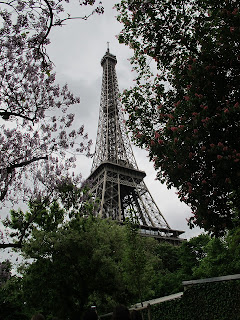I'm leaving for Manila tomorrow and so my mind is full of Manila-thoughts. Here's a short story I wrote that's set in Manila, and which is part of my short story collection, Acapulco At Sunset and Other Stories (Kindle, Nook, Anvil). The story is fiction.
AFTER a quarter of a century of living in America, I have turned into some kind of bird, a sparrow perhaps, returning to where I come from, once a year. One of the so-called "balikbayans" (which some people say with a sneer). Indeed we have become strange creatures, we balikbayans, not quite Filipino, not quite American. And still I do my annual trek, as if searching for something, what exactly I do not know, cannot pinpoint why exactly I return. I say it's to visit my mother. I say it's to visit my roots. But it's something else, something vital to my soul. Is it something from my past? Perhaps. So much of the present is linked to the past. Therefore this year, like the year before, and the year before that, I shut down my studio, say goodbye to my agent, and endure the 25-some hour flight from New York to Manila. And this year, I say the weather isn't too bad although Manila is getting smoggy. And my mother says it's the lahar, it has been such since Mt. Pinatubo exploded in 1991, the lahar, diverting rivers, drowning towns, filling the air with blackness that we inhale, that my mother inhales and which sends her and many others in Manila into coughing spells. Bronchitis and asthma, ordinary day-to-day illnesses, this is Manila now unlike the Manila that I knew in the 60s, long stretches of fields between Malate and Quezon City, stretches of nothingness, a canopy of blue sky, now there are houses and buildings, and traffic that can try a saint. Manila.
My school friends still remember me. Tess, especially, who was my best friend in high school, and who has remained a special friend always. "You must come to dinner. It's for the February celebrants," she insists. In their middle-age, my Theresian classmates have bonded and hold monthly dinners for their birthday celebrants. "It'll be at the clubhouse at my apartment. And we'll have a program, poetry reading! Bring your favorite poem to share. And you must tell us about your recent show. I heard it was a success."
MANILA WITHOUT
VERNA
by Cecilia Manguerra Brainard
by Cecilia Manguerra Brainard
AFTER a quarter of a century of living in America, I have turned into some kind of bird, a sparrow perhaps, returning to where I come from, once a year. One of the so-called "balikbayans" (which some people say with a sneer). Indeed we have become strange creatures, we balikbayans, not quite Filipino, not quite American. And still I do my annual trek, as if searching for something, what exactly I do not know, cannot pinpoint why exactly I return. I say it's to visit my mother. I say it's to visit my roots. But it's something else, something vital to my soul. Is it something from my past? Perhaps. So much of the present is linked to the past. Therefore this year, like the year before, and the year before that, I shut down my studio, say goodbye to my agent, and endure the 25-some hour flight from New York to Manila. And this year, I say the weather isn't too bad although Manila is getting smoggy. And my mother says it's the lahar, it has been such since Mt. Pinatubo exploded in 1991, the lahar, diverting rivers, drowning towns, filling the air with blackness that we inhale, that my mother inhales and which sends her and many others in Manila into coughing spells. Bronchitis and asthma, ordinary day-to-day illnesses, this is Manila now unlike the Manila that I knew in the 60s, long stretches of fields between Malate and Quezon City, stretches of nothingness, a canopy of blue sky, now there are houses and buildings, and traffic that can try a saint. Manila.
My school friends still remember me. Tess, especially, who was my best friend in high school, and who has remained a special friend always. "You must come to dinner. It's for the February celebrants," she insists. In their middle-age, my Theresian classmates have bonded and hold monthly dinners for their birthday celebrants. "It'll be at the clubhouse at my apartment. And we'll have a program, poetry reading! Bring your favorite poem to share. And you must tell us about your recent show. I heard it was a success."





















































































